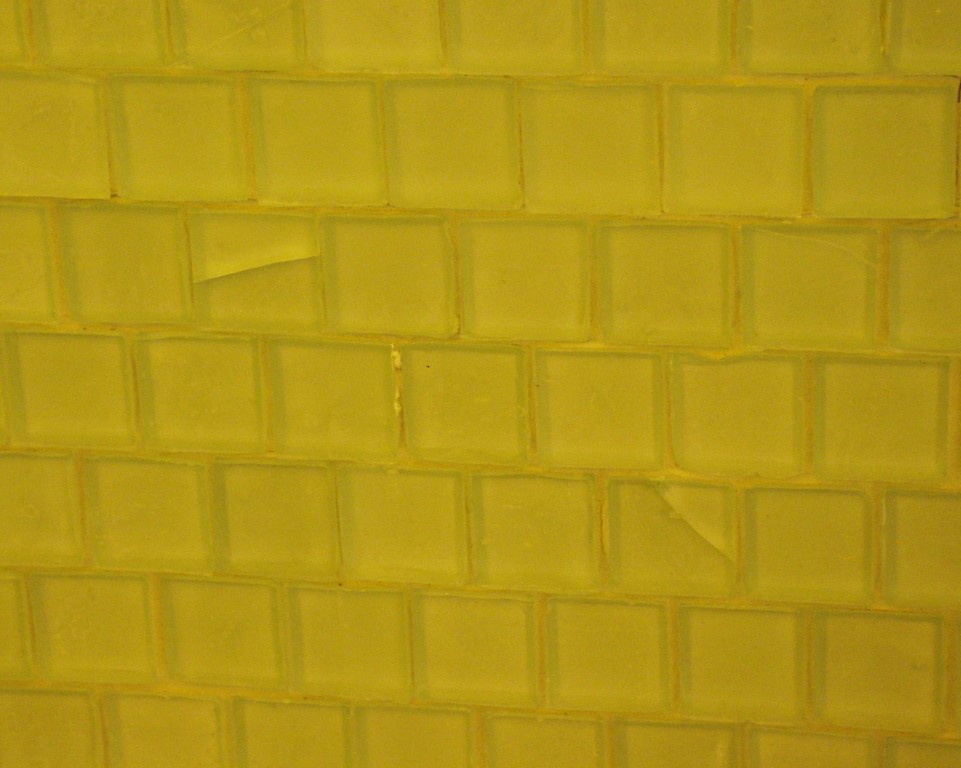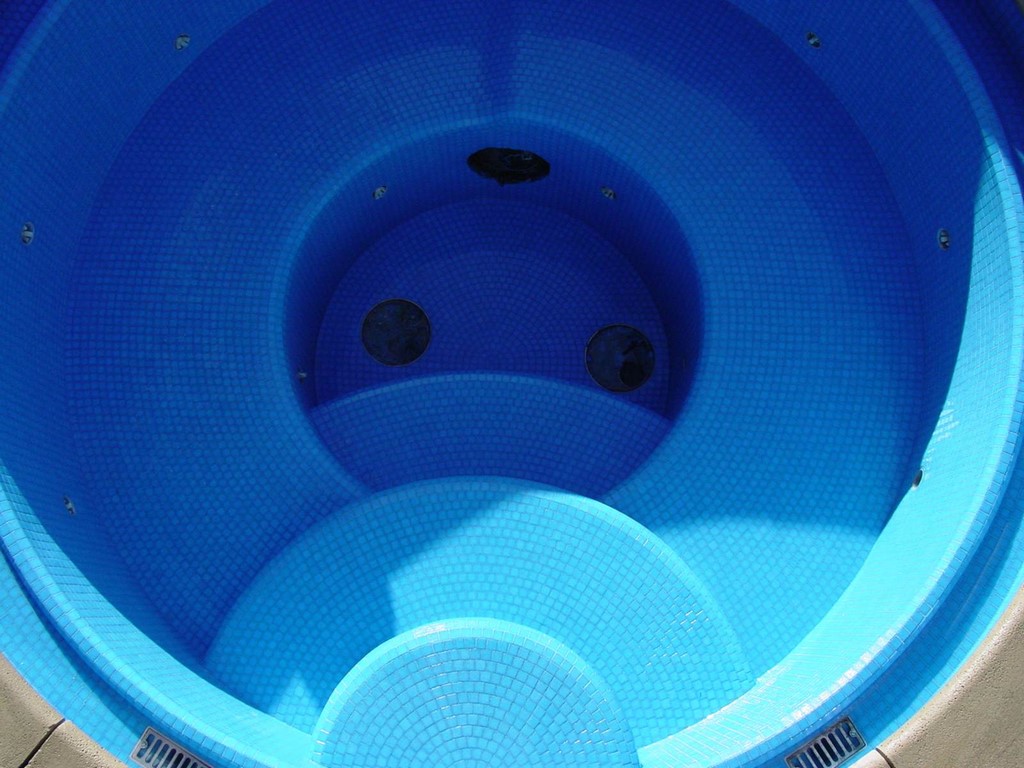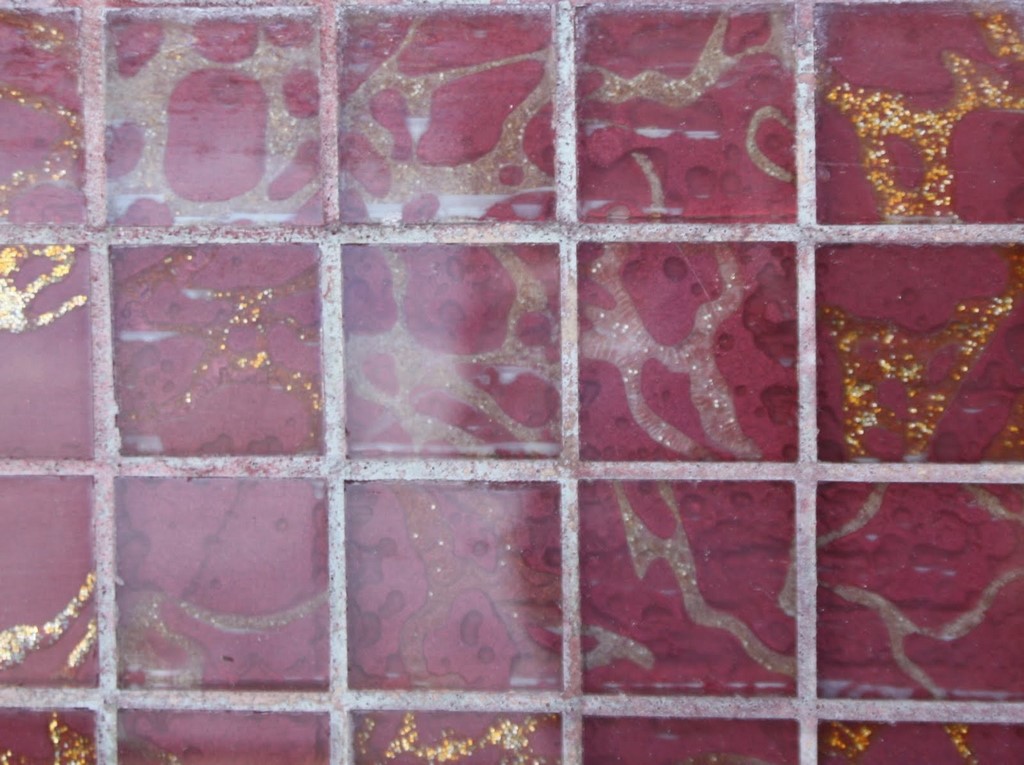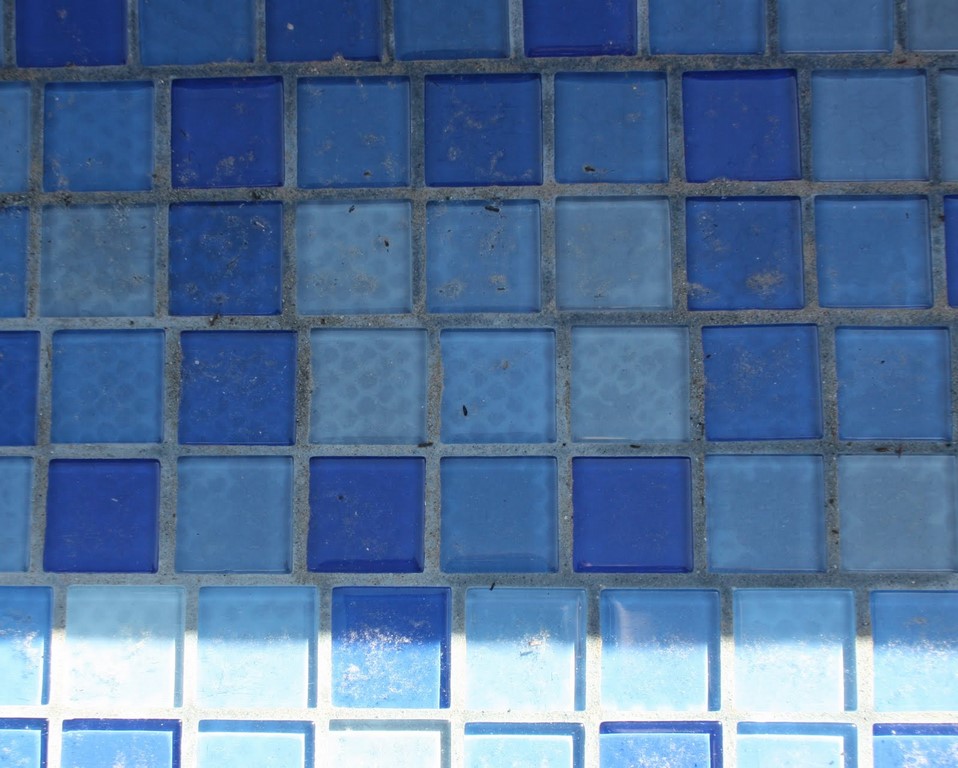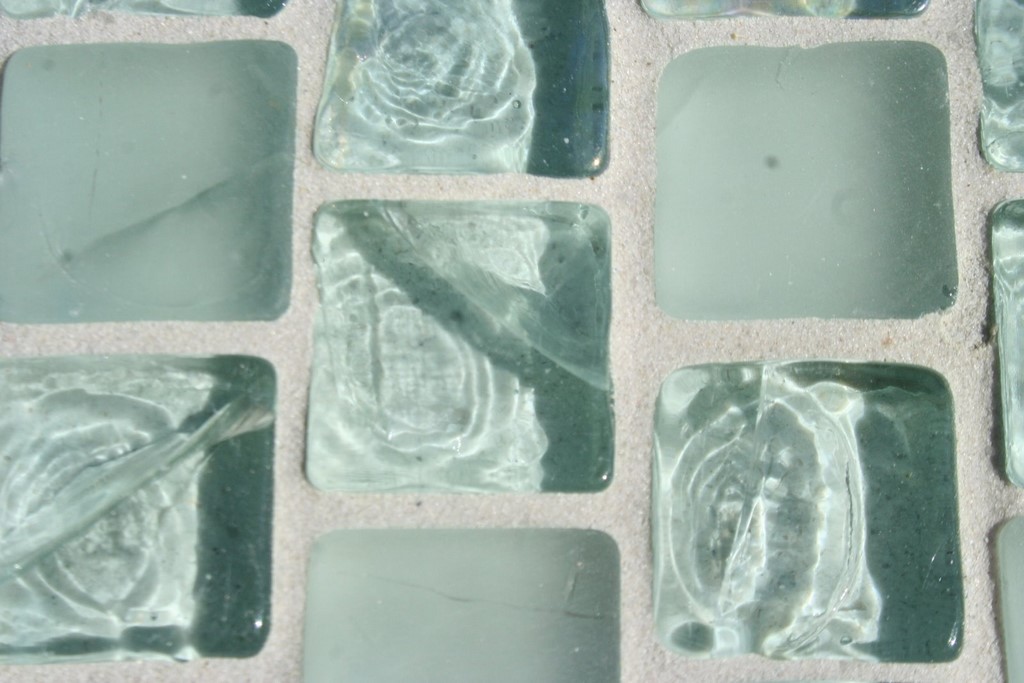Glass-Tile Dynamics

For quality watershapes, there’s nothing like a finish made up of mosaic glass tile: The material has a great look and a spectacular texture, comes in amazing colors and offers a full range of visual effects, from complete transparency to shimmering iridescence. It’s the perfect crowning touch for an outstanding project if the budget is right – and that’s where the trouble often starts.
Through the years, I’ve inspected more than 40 projects in which I’ve witnessed some form of glass-tile failure. I am personally aware of at least another 50, based on statements from people who’ve told and showed me what was going on but chose not to hire me to evaluate their situations in depth. In these cases, the photographs, samples and installation images were enough to tell me various tales of woe.
In every case, the defects were attributable to a combination of factors, typically starting with inferior quality glass tile and compounded by questionable installation techniques. My deduction here is that there are populations of clients and installers who love the potential of mosaic glass tile but don’t want to pay the price. And it’s a double whammy: To cut corners while still including glass tile, they usually purchase material for the project that isn’t up to snuff, then top it off by taking ill-advised shortcuts in the installation process.
Let’s start with a look at materials, then follow up with workmanship.
QUALITY MATTERS
When I see glass-tile failures, the projects almost always involve materials purchased through home-improvement warehouses, bargain Internet suppliers, close-out sales and other outlets where glass tile can be found for less than $10 per square foot. At one $20 million-plus estate I was called to, I actually found thousands of square feet of glass tile purchased at $2 per square foot. What was the pool contractor thinking?
That subprime material had been picked up through a home-improvement center, and there are literally thousands of companies on the web hawking glass-tile mosaics at price points within striking distance of $5 per square foot. The ads all read, “Quality Glass Tile at $4.99 per square foot,” but what they should really say is, “Cheap prices, Cheaper Quality: Beware Glass Tile at $4.99 per square foot!”
Some of these vendors are tile manufacturers, while others are merely middlemen or distributors. And the simple fact of the matter is that not all tiles are created equal. They may look and even feel the same, but just looking or feeling similar to quality, reputable, name-brand tile is distinctly not enough!
| It’s pretty easy to spot well-made tile applied by quality installers. But the level of excellence seen here is expensive – and probably explains why so many contractors and clients are willing to cut corners to make glass tile part of their projects. That’s a shame as well as a potentially devastating construction defect! |
This quality gulf is the result of the fact that mosaic glass tile is the hottest finish in the marketplace. Everyone wants it not only for pools and spas, but also for kitchens, bathrooms, showers and more because it looks so dramatically luxurious and expensive. Trouble is, relatively few property owners can truly afford to go all the way and get the best. (Heck, I’ve prospered in the trade for years and have all sorts of connections, but not even my own pool is lined in glass tile. My spa is, but that’s a modest sign of aspiration, not a whole-hog commitment!)
Here’s the truth: Quality glass-tile mosaics start at around $15 per square foot and go upwards from there, often breathtakingly so. A simple blend of Italian mosaic glass tiles can easily cost from $30 to $40 per square foot. And these are only standard blends – the ones suppliers prepare routinely, have in ready inventory and for which color balances are already computed.
Want something custom? Go ahead: Pick a custom blend of tiles from the manufacturer’s color palette and let your clients know the cost will be at least $40 and maybe up to $60 per square foot. And if those clients have a taste for gold tones – that is, for tiles in which gold leaf is sandwiched within the glass – make certain they’re seated comfortably when you let them know they’ll be spending upwards of $750 per square foot and that the price will climb if the cost of gold rises between the time the order is placed and fulfilled.
QUESTIONABLE APPROACHES
As is implied just above, there’s a lot that goes into the manufacturing of quality glass tile – and plenty of room for shortcuts with inferior versions.
The differences here have to do with manufacturing processes and choices that go beyond the scope of this article, but to sum up: By manipulating and taking shortcuts with firing temperatures, annealing, blending, raw material/recycled material ratios, firing repetitions and contaminant controls, the makers of inferior products find ways to reduce their costs, sometimes dramatically. In these operations, there are also deficits of initial quality control, ongoing random quality control inspections, testing procedures and the tracking of production lots.
These outfits also take shortcuts with color. Quality suppliers will expensively sandwich a color layer between layers of glass or use costly chemicals and oxides to change the color of the glass throughout the matrix, so no chip or scratch will ever change the perceived coloration. Quality glass can also be coated at high temperatures to produce a wonderfully lustrous material.
By contrast, suppliers of cut-rate materials only knock off the looks and textures of the best glass-tile options. Recycled glass can be a problem here: Although it seems a “green” solution, it’s a risky buy for the installer as well as the client. Also watch out for back-colored glass as well hand-painted, silk-screened or sprayed-on colorings: They may look legitimate today, but it’s highly unlikely that the coatings will stay bonded to the hard, smooth glass surface for the long haul.
| With this inferior glass tile, the color backing has separated from the pieces on the left side of the photograph, while the pieces on the right side are still bonded. In this case, the use of a dark thinset highlights the presence of the mesh backing. |
A glued-on mesh backing is another hallmark of questionable products: Given the fact it’s unlikely that any of these companies ever bothered to perform accelerated-failure testing of their materials, they’ll have no idea if the backing will stay attached to the glass. Few have any idea whether the adhesives are even waterproof! Soaking questionable mesh backed tiles in water often reveals a milky substance (that is, glue) coating the entire back of the tiles. This means the thinset will only be in contact with glue – hardly the 95% material contact required by industry standards.
The point is, these cut-rate products are filled with unknowns: Will the glued-on backings delaminate in a few years and litter the bottom of the pool with popped tiles? Will the back-coloring technique result in the colors deteriorating with long-term water exposure? Is the tile even intended for underwater use? After all, what’s good for a kitchen’s backsplash is not necessarily the best choice for a submerged tanning shelf.
Indeed, time is the killer with inferior products. If mesh backing begins to fail, for example, the once-hidden grid pattern will resurface – a particular problem with clear or translucent tiles. And any mesh backing that is too thick and, as a result, covers more than 10 percent of the tile’s surface area can easily lead to failures. And plastic-dot backings? They’re even worse!
The solution, in the face of these failures, is complete tile replacement – one of the worst of all possible jobs in the world of watershaping. Chipping out glass tiles is awful (and dangerous) work, with shards flying everywhere. Even with protective gear, it’s truly a mess. And months later, it’s almost inevitable that your client’s smallest child will be the one who, with his or her bare foot, will find the one fragment of flying glass you overlooked.
ON THE JOB
Beyond the glass tile itself, there’s a whole list of installation factors that are subject to shortcuts by cost-cutting or ignorant installers.
These installation defects often manifest themselves in tile discoloration that results from using gray cement, mortar or setting material; not keeping the installed tile shaded until the pool is filled; or failing to protect the tiles from rain or irrigation water after installation and before filling.
Longer-term problems arise if the installer allows the bond coat to skin over; this will result in poor bonding and the creation of voids in which there’s no bonding of the tile to the substrate at all. Problems also arise if there’s excess water in the bondcoat (or thinset); if the direct-set installation method is used; or if the tile is grouted too soon, thereby preventing the complete curing of the bondcoat. This curing gap causes discoloration and will possibly promote algae and mold growth.
| The mesh backing is clearly visible through this subpar glass tile – and just as clearly covers much more than the recommended five percent of the tile’s surface, which may eventually lead to delamination. The tile alignment is another distraction – as is the fact that a dark thinset was used, making the mesh backing stand out even more. |
These issues get even worse if the setting materials are field-mixed, which can result in unknown bond and compression strengths, density and permeability. And if the pool is filled too soon after grouting, the grout will not cure properly and won’t serve its desired and necessary purpose.
Some cut-rate installers will also limit their costs by omitting a waterproofing membrane, then will compound the error by applying too little bondcoat, which will let either a waterproofing membrane (if used) or the substrate show through – a particular problem with transparent and even translucent tiles. Trowel marks and bondcoat contamination from inadequate or sloppy surface preparation are also of concern here: Any and all flaws behind the glass will reveal themselves!
These are just some of the most common mistakes. Individually or in combination, they can result in a potentially beautiful watershape turning into a truly hideous mess.
THE HIGH ROAD
This is why all glass-tile installers should follow published and accepted workmanship standards, such as ANSI A118 from the American National Standards Institute. And they should do so despite the fact that low-cost tile suppliers, many of them based overseas, might recommend their local application practices in their installation instructions.
In addition and at a minimum, the material itself should meet the ANSI A137.2 standard for the performance of glass tile. This section of the standard specifies that, for outdoor applications, installers should specifically ascertain the material’s compliance with guidelines for resistance to thermal shock. (The standard requires that tiles approved for outdoor applications must pass a mandatory test using a 100-degree F temperature range.) Tile that fails this test – or whose supplier has refused to subject tile to this test – are suited only for use in dry-interior-wall applications.
Be aware: There are many brand-name glass-tile manufacturers that have yet to subject their tiles to these rigorous guidelines. Further, be aware that the A137.2 standard was in fact developed by glass-tile manufacturers with full representation on the standards committee!
| This tile apparently wasn’t suitable for an outdoor application and began cracking when exposed to the thermal stresses normally encountered in exterior pool environments. |
Also, installers should insist on using only face-mounted tiles. Face-mounted tiles come with a clear film or paper sheet on the surface, a system that ensures a complete bond and 100-percent contact between each piece of tile and the setting material. Most manufacturers of mesh-backed tiles will provide face mounting for a nominal additional charge – a small price to pay for a lot of peace of mind.
And remember: For all of their virtues, the ANSI and Tile Council of North America’s guidelines only offer minimum standards for workmanship standards and cure times, mortar beds, waterproofing membranes, bondcoats and grouts. Those who work with superior materials on superior projects should be operating at levels far surpassing those minimums.
Bottom line: Any glass-tile mosaic can look terrible when installed improperly, even if the material costs upwards of $100 per square foot. Quality material is important to long-term success, but quality installation is at least as crucial. And it doesn’t come cheap, especially if a project involves lots of details that require meticulous trimming around jets, coves, fittings, benches or steps.
It all takes time, and time is money. So don’t fool yourselves or your clients: If mosaic glass tile is beyond the budget, do everyone involved a favor and follow another path – preferably with one of the other fine finishes that make watershapes so beautiful!
Paolo Benedetti is principal at Aquatic Technology Pool & Spa, a design/build firm based in Morgan Hill, Calif. He may be reached at [email protected].










